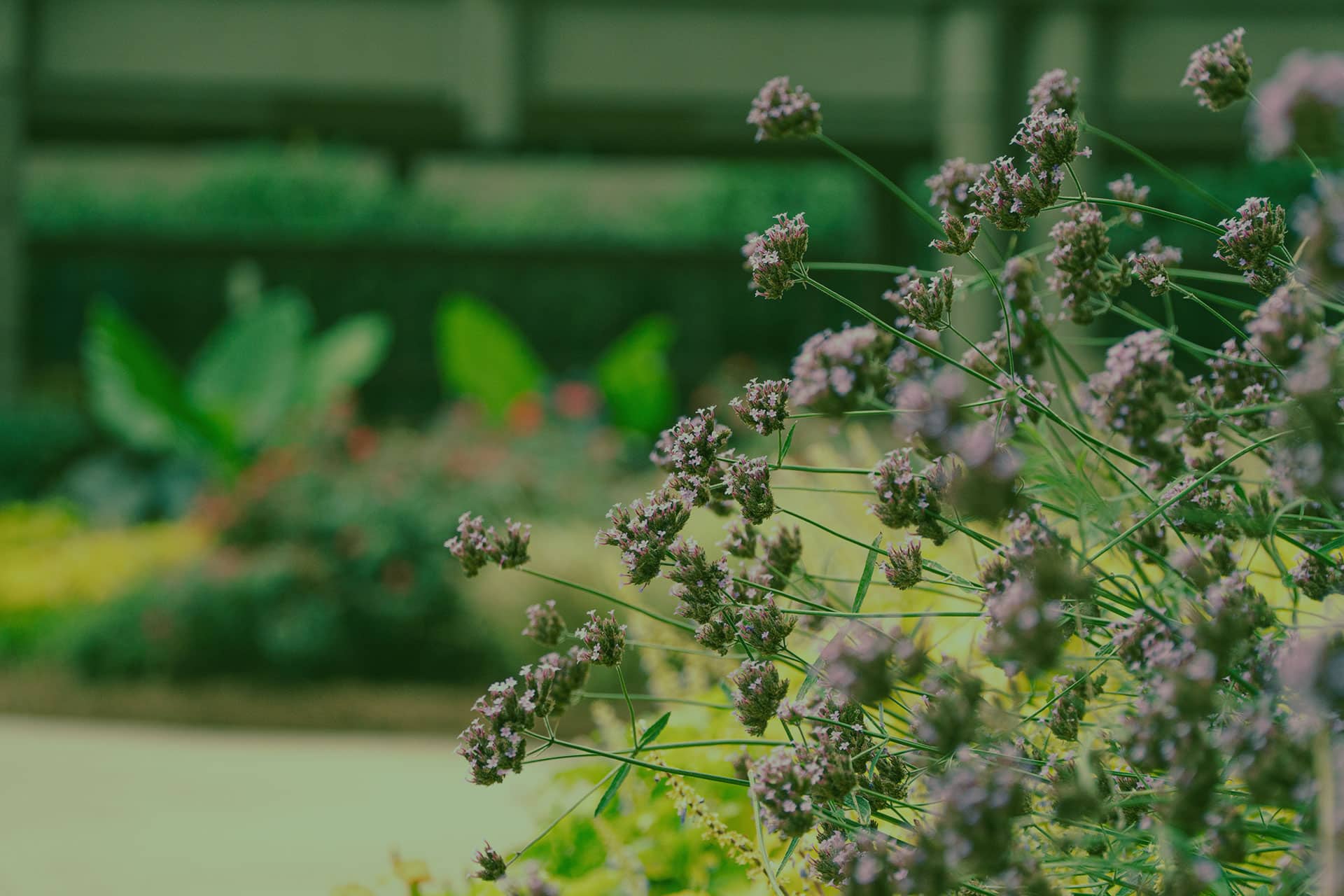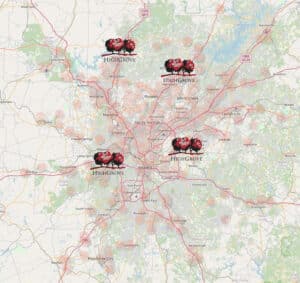Turf in shaded areas of your Atlanta property is dying out. No matter the weather or what landscape maintenance efforts you try, the grass simply doesn’t want to grow in heavily shaded areas of your landscape—and you want a solution.
We see this often on properties with mature trees with canopies that provide lots of shade. The benefit of shaded areas is that they are cooler and often more pleasing for people who are spending time outdoors on your commercial property. But growing grass is often a problem. What should you plant instead of grass in the shade?
The good news is, there are alternatives to turf so you can maximize the health and beauty of your Georgia landscape; and there are some cultural practices with the right type of turf that can improve your results in shaded areas.
When Turf Competes With Trees For Nutrients—The Trees Win

Large, mature trees contain deep, wide root systems that often interfere with successful turf growth. In fact, there are thousands of feeder roots for any given tree, and plants that are near these thirsty roots must compete.
The tree usually wins, and will absorb the moisture and nutrients from soil. This, plus the fact that turf planted near and under trees receives less sunlight, can put grass in shaded areas at a real disadvantage.
We always emphasize the gardener’s mantra, “Right plant, right place.” And usually, the right place for turf is not near mature trees. Instead, replace grass that’s in the shade. Consider using mulch under the tree’s drip line.
Removing turf and laying down mulch instead will not only address grass that is not performing, it protects tree roots. Even if the trees win against turf, the “competition” can stress some younger trees, in particular. In the Southeast, we generally use pine straw mulch for groundcover vs. hardwood mulches. Whatever mulch you select, keep it consistent throughout your property.
Turf Alternatives: Groundcovers That Love Shaded Properties
If you want the shaded area to be green and recognize that turf is simply not going to thrive there, consider a selection of groundcovers that can perform will with low sunlight. We like ivy, pachysandra and perennials like Ajuga.
If planting groundcover near trees, it is best to start growing them while trees are younger. That way, tree roots will not compete with plants as they are establishing. Once established, these groundcovers are low-maintenance and spread easily.
Another common groundcover is liriope, a clumping grass that spreads quickly and creates a lush, grassy cover. Be careful what type of liriope you plant. The aggressively spreading liriope spicata can take over landscape beds and push out other perennials.

However, this variety is more cost-effective that liriope muscari (clumping) that does not spread by runners. That’s because you must plant more lilirope “clumps” to fill an area.
Some property owners prefer groundcover to pine mulch because mulch must be replaced on an annual basis. So, it’s an ongoing maintenance expense while groundcovers are a one-time planting investment plus some light maintenance. With any landscaping decision, it’s important to consider the lifetime cost of your decision.
Nurturing Grass In Shaded Areas: Keys To Success
If you absolutely prefer turf for your shaded Atlanta property, there is an option: plant fescue. This cool-season turf will perform in shaded areas. However, you should keep the entire lawn consistent. One area of the lawn should not be Bermuda grass while shaded areas are fescue because your warm-season grasses will go dormant while the cool-season fescue is performing. The patchy look is not pleasing.
If you choose fescue turf for your lawn, you can encourage its growth in shaded areas (and everywhere, actually) with regular aeration and overseeding.
For repairing damaged areas, you can lay down sod or reseed the dead spot.

Talk to a landscape professional about the pros and cons of caring for fescue turf in shaded areas vs. selecting an alternative like pine mulch or groundcover. Remember, your fescue will require annual care and it will die out during the warm season. And, overseeding fescue in shaded areas with a warm-season grass to get yearlong color is not a viable option because warm-season turf varieties like Bermuda grass prefer full sun.
So, yes—you can plant turf in shaded areas. But your selection is limited, and it’s important to have realistic expectations for its performance. We might advise against turf in shaded areas, in general, because you’re working against Mother Nature, which means a greater maintenance cost and more resources to keep the turf looking good.
Appreciate Shaded Areas Of Your Property—And Plant A Turf Alternative
Grass isn’t the only plant that grows in large areas of ground. There are a number of successful groundcovers, some blooming that provide seasonal color. These add texture and interest to your commercial landscape. Pine mulch is always a great choice because of its protective qualities—it helps soil retain nutrients, protects tree roots and, like groundcover, prevents erosion.
Let’s talk about how you can improve the shaded areas of your commercial grounds. Call us any time at 678.298.0550, or fill out this simple contact form and we’ll get in touch with you.
{{cta(‘963dfb6e-b388-4963-8dd7-ca59c6761613’)}}
Last modified: April 15, 2022



